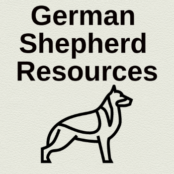German Shepherds are known for their intelligence, loyalty, and versatility. However, to harness these traits effectively, proper training is crucial. Whether you’re a seasoned dog trainer or a new German Shepherd owner, understanding and implementing basic training commands can make a world of difference in your dog’s behavior and your relationship with them. In this guide, we’ll explore seven essential commands that every German Shepherd should learn, offering step-by-step instructions and insights to make the training process smooth and effective.
Table of Contents
The Importance of Training German Shepherds
Training German Shepherds isn’t just about teaching them tricks; it’s about establishing a foundation of communication, trust, and mutual respect. These dogs are highly intelligent and energetic, making them both rewarding and challenging to train. Proper training ensures that your German Shepherd can safely interact with other dogs and people, follow your lead in various situations, and become a well-behaved member of your household.
Benefits of Teaching Basic Commands
Training your German Shepherd offers numerous benefits, including improved safety, better control, and a stronger bond between you and your pet. Basic commands can prevent your dog from running into dangerous situations, help manage their behavior in public, and make daily interactions more enjoyable. Additionally, the mental stimulation provided by training can keep your German Shepherd engaged and happy.
Sit
Purpose and Utility
The “sit” command is one of the most fundamental and versatile commands you can teach your German Shepherd. It serves as the foundation for many other commands and helps establish control in various situations. Whether you’re preparing to cross the street, greeting guests, or simply wanting your dog to calm down, the “sit” command is invaluable.
Step-by-Step Training Method
- Get their attention: Hold a treat close to your dog’s nose.
- Raise the treat: Slowly move the treat above their head, causing them to naturally sit as they follow the movement.
- Command and reward: Once they sit, say “sit” and give them the treat, followed by praise.
Repeat these steps multiple times a day until your German Shepherd sits on command without the need for a treat. Consistency is key to reinforcing this behavior.
Stay
Importance for Safety and Control
The “stay” command is crucial for maintaining your dog’s safety and ensuring they remain where you want them. This command is particularly valuable in situations where immediate obedience is necessary, such as preventing your dog from running into traffic or approaching strangers without permission.
Techniques for Teaching and Reinforcing
- Command “sit”: Start by having your dog sit.
- Introduce “stay”: Hold your hand out, palm facing your dog, and say “stay.”
- Step back: Take a few steps back while maintaining eye contact.
If your dog stays, reward them with a treat and praise. Gradually increase the distance and duration, always rewarding them for successful stays. If they move, calmly guide them back and repeat the command.
Come
Crucial for Recall and Obedience
The “come” command is essential for recall, ensuring your dog returns to you promptly in various situations. This command can prevent potential dangers and is a vital part of obedience training, fostering trust and responsiveness between you and your German Shepherd.
Training Strategies and Common Challenges
- Use a leash: Begin training in a safe, enclosed area with a leash.
- Encourage approach: Crouch down, open your arms, and excitedly say “come.”
- Reward and praise: When your dog comes to you, reward them immediately with a treat and praise.
Some dogs may be hesitant at first, especially if they are distracted or anxious. Be patient and ensure the training environment is free from distractions. Consistent practice in various settings will help reinforce the command.
Down
Uses in Various Situations
The “down” command is useful in many scenarios, from calming an excited dog to preparing them for grooming or vet visits. This command encourages your dog to lie down and stay in a relaxed position, promoting better behavior and control.
Training Approach and Progression
- Start with “sit”: Have your dog sit before proceeding.
- Guide them down: Hold a treat close to their nose and slowly move it to the floor.
- Command and reward: Say “down” as they follow the treat into a lying position, then reward them.
Practice this command regularly, gradually increasing the time your dog stays in the down position before rewarding them. Consistency and patience will help them master this essential skill.
Heel
Significance for Leash Walking
The “heel” command ensures your German Shepherd walks beside you without pulling on the leash, making walks more enjoyable and safer for both of you. This command promotes good leash manners and strengthens your dog’s focus on you during walks.
Methods for Teaching Proper Heeling
- Start with a short leash: Keep your dog close to you on a short leash.
- Use treats: Hold a treat in your hand at your dog’s nose level.
- Command and walk: Say “heel” and start walking, rewarding your dog for staying by your side.
Practice heeling in different environments, gradually increasing the distance and duration. Consistent reinforcement will help your German Shepherd understand and maintain the heel position.
Leave It
Safety Applications
The “leave it” command is essential for preventing your dog from picking up or engaging with potentially harmful objects. This command enhances your control over your dog’s behavior and keeps them safe in various situations.
Training Process and Reinforcement
- Hold a treat: Show your dog a treat in your hand.
- Command “leave it”: Close your hand when they try to take it and say “leave it.”
- Reward alternative behavior: When they stop trying to get the treat, reward them with a different treat or praise.
Repeat this process with different objects and in various environments to ensure your dog understands the command. Consistent practice and positive reinforcement will make this command second nature.
Off
Importance for Household Manners
The “off” command is crucial for teaching your German Shepherd proper household manners, such as staying off furniture or not jumping on people. This command helps establish boundaries and promotes respectful behavior.
Techniques for Teaching and Consistency
- Use a firm tone: Say “off” in a firm but calm voice when your dog jumps or gets on furniture.
- Redirect behavior: Guide your dog to an appropriate behavior, such as sitting or lying down.
- Reward compliance: Reward your dog with treats and praise for following the command.
Consistency is essential for reinforcing this command. Ensure all family members use the same approach to avoid confusing your dog.
Conclusion
Training your German Shepherd with these seven essential commands—sit, stay, come, down, heel, leave it, and off—will create a well-behaved, obedient, and happy companion. Each command serves a specific purpose and contributes to your dog’s overall training and safety. Remember that patience, consistency, and positive reinforcement are key to successful training.
By dedicating time and effort to teaching these commands, you’ll enjoy a stronger bond with your German Shepherd and a more harmonious life together. For further guidance and personalized training tips, consider consulting a professional dog trainer who can help you and your dog achieve your training goals.

